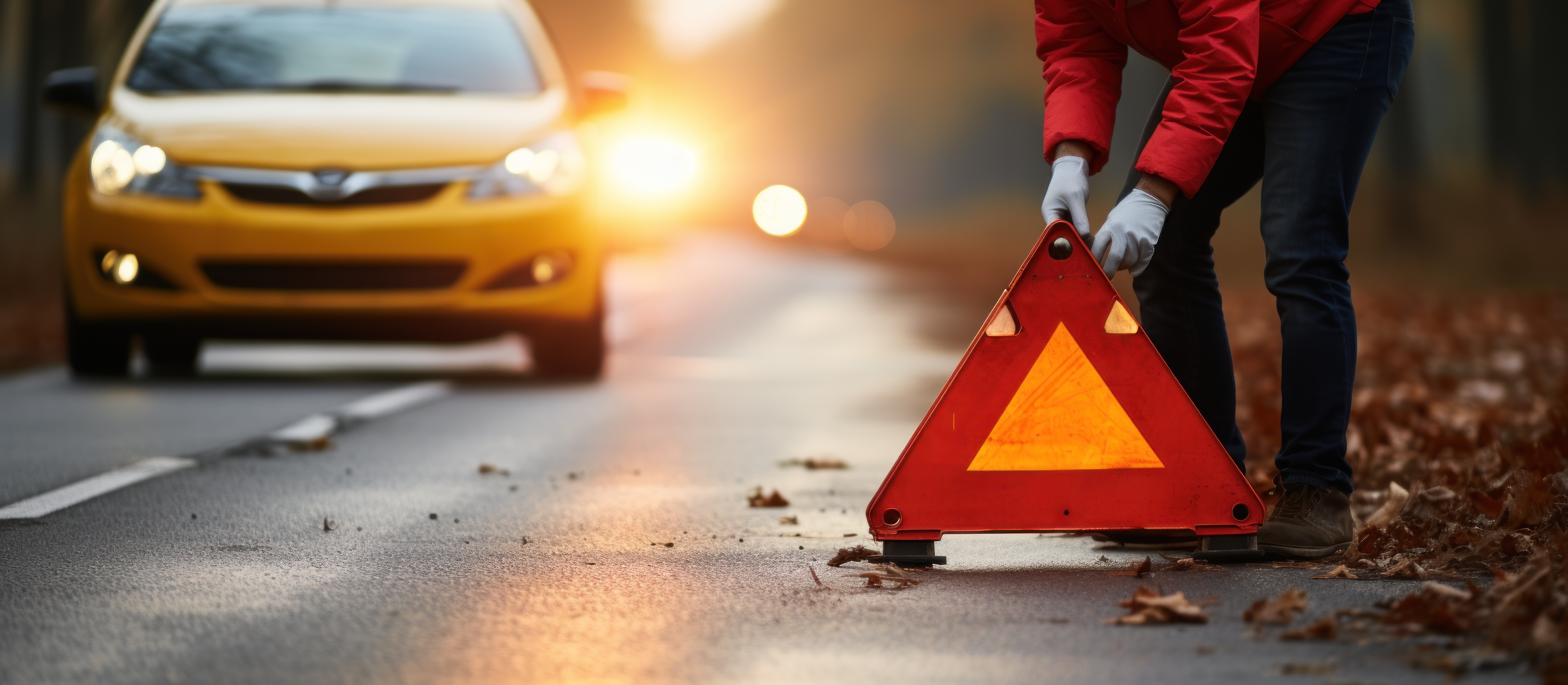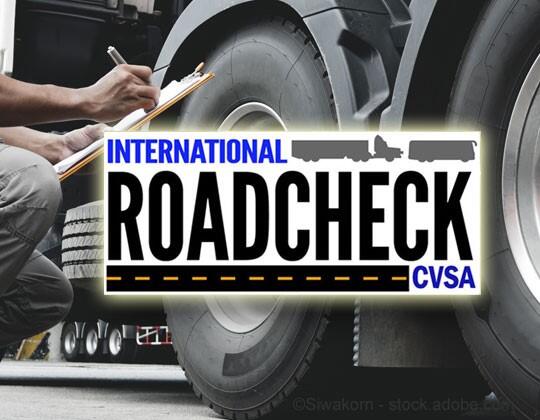The mirrors on your vehicles provide real-time information to ensure safe operation by the driver. Poorly maintained or misaligned mirrors can significantly contribute to, or even cause, accidents by depriving drivers of crucial information. It's surprising how many trucks in a fleet have damaged or misadjusted mirrors. It's advisable to develop a habit of checking your fleet's mirrors at least once a week to ensure they're properly adjusted and secure. Observing the mirror adjustments after a driver returns from their route can indicate if they're using them effectively for defensive driving.
Mirror Usage Guidelines:
- A skilled driver pays close attention to mirrors, almost as much as to the road ahead.
- Mirrors restrict vision; therefore, it's essential to check for traffic both with and without using them.
- Properly adjusting mirrors is vital for safe driving.
- To adjust mirrors accurately on combination units, the vehicle must be straight, and the driver should be in a normal driving position.
- Mirrors should be clean and free of cracks.
- Ensure mirror heads and support brackets are securely tightened to minimize vibration.
- Maintain visual activity while driving, avoiding fixation on any object for more than two seconds.
Mirror Station Setup:
- If space permits, consider establishing a mirror check station at your facility.
- The station requires a level surface measuring 30' wide by 80' long.
- Use white outdoor marking paint to delineate the station.
- Make it mandatory for drivers to check their mirrors properly before starting their route.
- For guidance on setting up a mirror station, visit: [http://www.idealease.com/download/Newsletter/Mirrorstation.doc].
Safety Meeting Exercise: During your next safety meeting, conduct an exercise with drivers where one sits in the cab in the proper driving position with the engine off and the key removed. Another driver should stand at the back of the truck/trailer and walk away in a straight line. The driver in the cab should sound the horn when they can see the other driver in the mirrors. Before starting, have drivers estimate the total distance from the back of the unit to where the horn will be heard. This exercise highlights the blind spot directly behind their unit.
FMCSA Extends Exemption for Rear-Facing Mirrors
The FMCSA has announced its provisional decision to renew Stoneridge, Inc.'s exemption, permitting motor carriers to utilize the MirrorEyeTM Camera Monitor System (CMS) instead of the two rear-vision mirrors mandated by the Federal Motor Carrier Safety Regulations (FMCSRs). This exemption is renewed for a period of 5 years, unless revoked sooner. The extension is effective from February 13, 2024, through February 12, 2029, unless otherwise rescinded. Comments on this renewal must be submitted by March 4, 2024.
Proper Placement of Warning Triangles When Stopped on the Roadside
First, activate your 4-way hazard flashers immediately!
Then, follow these instructions for placing the warning reflective triangles:
- Position one triangle on the traffic side, about 4 paces (approximately 3 meters or 10 feet) from the stopped commercial motor vehicle, facing approaching traffic.
- Place another triangle at a distance of 40 paces (around 30 meters or 100 feet) from the vehicle, centered in the traffic lane or shoulder occupied by the vehicle, also facing approaching traffic.
-
Similarly, set up a third triangle at 40 paces (approximately 30 meters or 100 feet) from the vehicle, positioned in the center of the traffic lane or shoulder occupied by the vehicle, but facing away from approaching traffic. - If there are hills, curves, or obstructions within 500 feet, position a warning signal in the direction of the obstruction, between 100 feet to 500 feet from the stopped vehicle, to provide ample warning to other highway users.
- On divided or one-way roads, if the commercial motor vehicle is stopped on the traveled portion or shoulder, place one warning device at a distance of 200 feet and another at a distance of 100 feet in the direction toward approaching traffic in the center of the lane or shoulder occupied by the commercial motor vehicle.
Daylight Saving Time Begins this Sunday, March 10th!
Daylight saving time will commence for 2024 on Sunday, March 10, at 2 a.m. local time, prompting our clocks to move ahead one hour. This change, part of the semiannual time adjustment that impacts millions of Americans, may affect your daily routines.
• Take proactive steps to ensure all your drivers are informed about the upcoming daylight saving time change in two weeks. Specifically, caution route drivers as the amount of daylight will vary according to their stops due to the time change. • Additionally, remember to replace the batteries in smoke alarms and carbon monoxide detectors.
While most sleep experts recommend a minimum of 7 hours of sleep per night, many individuals typically sleep approximately 40 minutes less on Sunday night, March 10th, after Daylight Saving Time returns. Plan ahead to avoid drowsiness by sleeping in on Sunday morning and taking a nap in the afternoon.
It's important to note that not all states observe Daylight Saving Time. Hawaii and Arizona (excluding the Navajo Nation) do not participate, nor do the territories of American Samoa, Guam, the Northern Mariana Islands, Puerto Rico, and the U.S. Virgin Islands.
FMCSA Issues Warning About Phishing Scams Targeting Carriers with Fake Safety Audits
The Federal Motor Carrier Safety Administration (FMCSA) has released a cautionary alert to motor carriers regarding phishing scams. According to the agency, some individuals are posing as FMCSA representatives and sending emails to registered entities, falsely claiming that a safety audit needs to be scheduled. The email includes a link to request the safety audit, which appears to have a SAFER URL and resembles FMCSA's MC-150 form. However, it prompts recipients to enter sensitive information such as a PIN #, EIN #, and Social Security Number.
Not only does this request for information include Personal Identifiable Information (PII), but it also opens the door for unauthorized access to the recipient's FMCSA account. Although the email may seem to originate from FMCSA, it is not genuine.
FMCSA advises that legitimate communications regarding safety audits typically originate from an FMCSA dedicated mailbox or the designated entity within the State responsible for conducting the safety audit. These emails usually end with ".gov". The agency urges companies to verify any suspicious emails or communications with the appropriate agency or contact their FMCSA Division Office directly for clarification. Additionally, the Federal Trade Commission (FTC) recommends following specific procedures for email verification.
If a company suspects it has fallen victim to fraud or identity theft, FMCSA recommends using the official Federal Trade Commission website dedicated to reporting fraud cases at: https://reportfraud.ftc.gov/#/.
CVSA’s International Roadcheck Is Set for May 14-16
The Commercial Vehicle Safety Alliance (CVSA) has scheduled its International Roadcheck for May 14-16. This initiative, conducted over three days across Canada, Mexico, and the United States, is a prominent effort focusing on commercial motor vehicle inspection and regulatory compliance enforcement.
Certified law enforcement personnel from CVSA will carry out inspections of commercial motor vehicles and drivers at weigh/inspection stations, temporary sites, and mobile patrols to ensure adherence to federal, state, provincial, or territorial regulations. Data collected during the 72-hour period of International Roadcheck will be analyzed and released later this summer.
Each year, International Roadcheck places particular emphasis on specific violation categories. For the current year, the initiative will concentrate on two main areas: tractor protection systems and alcohol and controlled substance possession.
The issue of controlled substance and alcohol possession/use remains a significant concern for motor carriers, drivers, and the public at large. The rising number of prohibited drivers documented in the U.S. Drug and Alcohol Clearinghouse (DACH) underscores this pressing issue, posing risks to all motorists across North America.
Throughout the three days of International Roadcheck, inspectors will conduct the routine North American Standard Level I Inspection, which involves a comprehensive 37-step procedure examining vehicle components and driver documentation and requirements.
For further details on Roadcheck 2024, visit: https://www.cvsa.org/news/2024-international-roadcheck/











